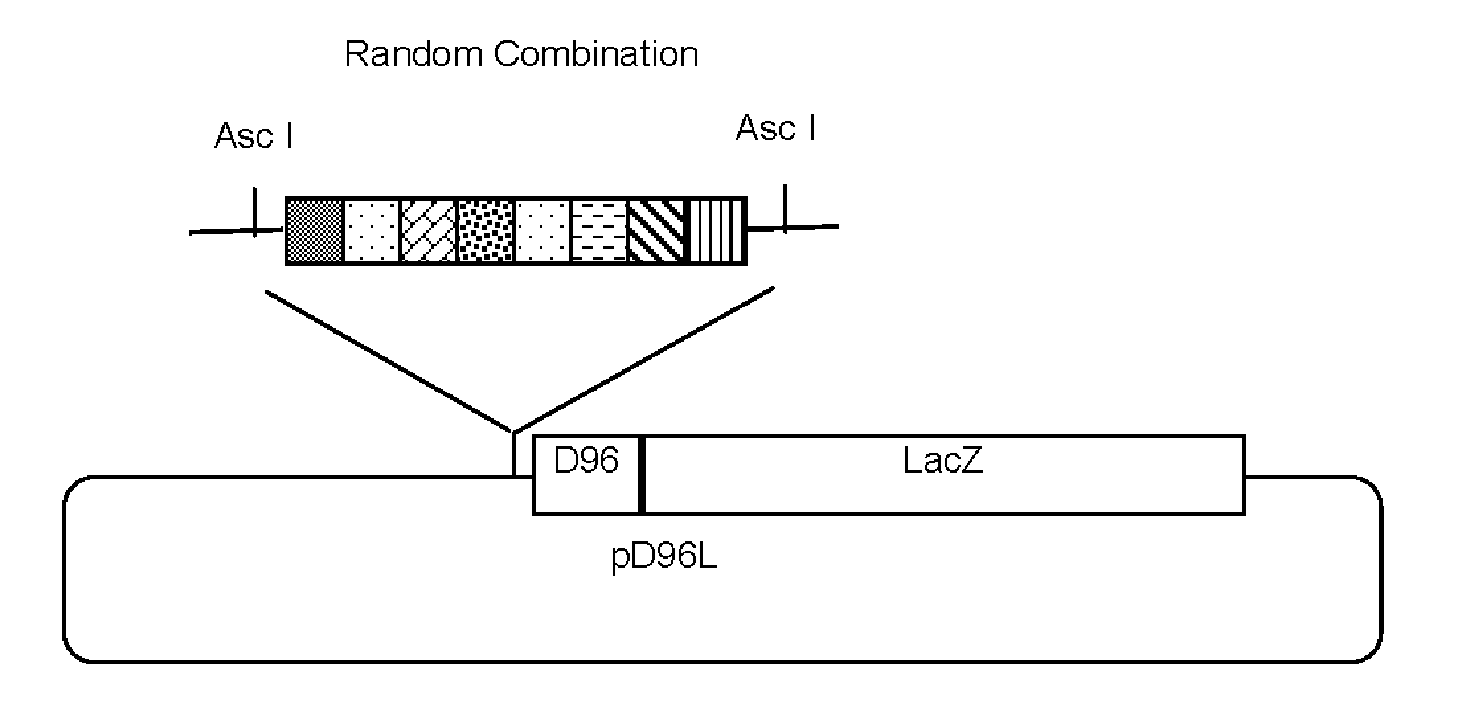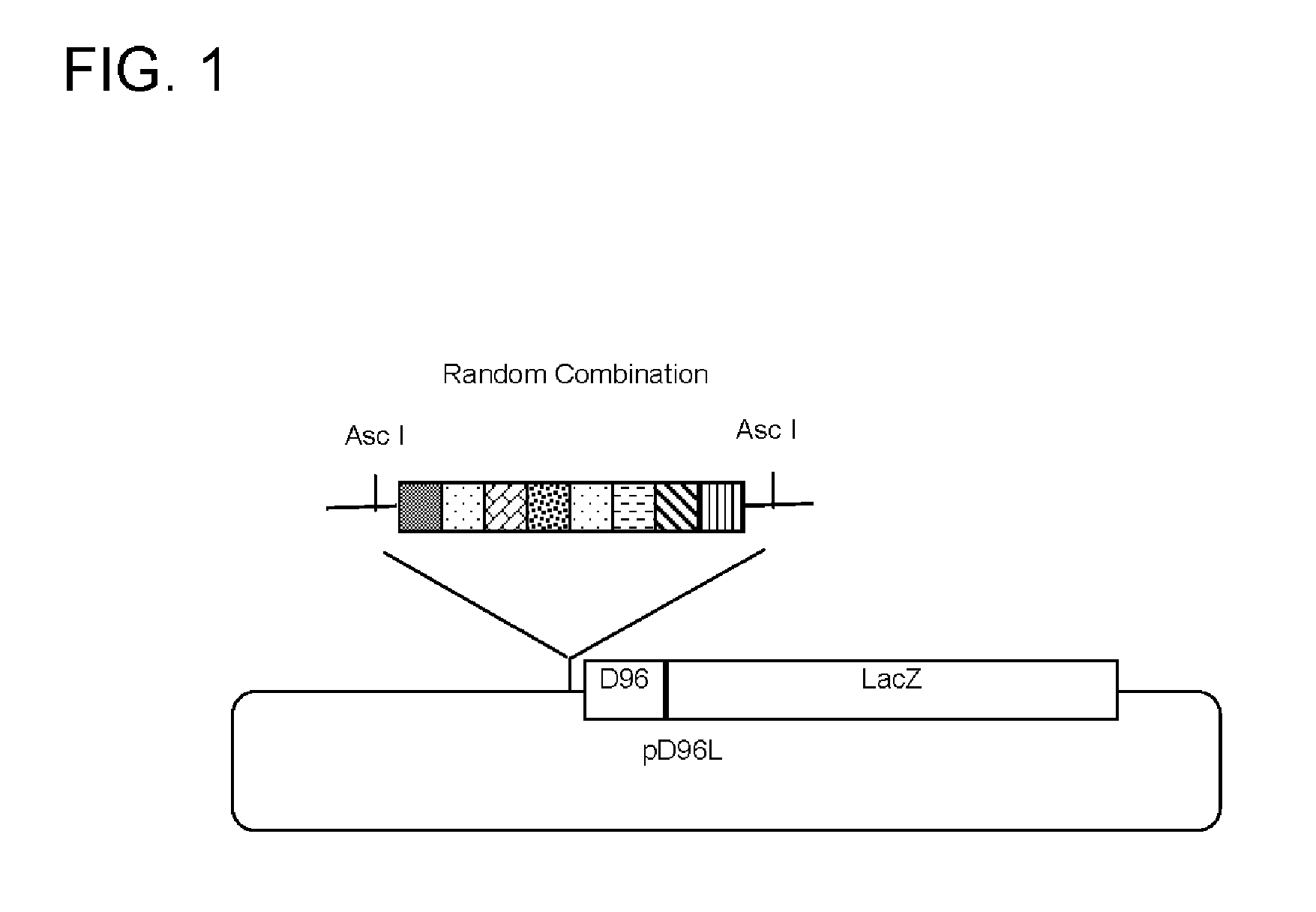System for producing Synthetic Promoters
a promoter and synthetic technology, applied in the field of system for designing promoters, can solve the problems of limited success, difficulty in delivering the therapeutic gene into specific target cells, and insufficient clinical evidence of gene therapy. achieve the effect of high efficiency
- Summary
- Abstract
- Description
- Claims
- Application Information
AI Technical Summary
Benefits of technology
Problems solved by technology
Method used
Image
Examples
example 1
Microarray Expression Profiling of Transcription Regulators and Related Proteins in Neuroblastoma Cells
example 1.1
Experimental Procedures
Example 1.1.1
Cell Culture and Total RNA Isolation
[0063] SH-EP1, SH-SY5Y, and SK-N-BE(2)—C neuroblastoma cells were cultured in D-10 medium: Dulbecco's modified Eagle's medium with 4.5 g of glucose per liter, containing 10% fetal bovine serum (heat inactivated) supplemented with glutamine (0.03%), penicillin (100 units / ml), and streptomycin (100 μg / ml). Cells were maintained in a humidified 95% air, 5% carbon dioxide atmosphere in a 37° C. incubator. Total RNA was extracted from cells grown to 80-85% confluence in T150 tissue culture flasks, using the RNeasy midi kit (Qiagen) following the manufacturer's protocol, and stored at −80° C. in aliquots.
example 1.1.2
[0064] The expression profiles of transcription factors and related proteins were obtained from SH-EP1, SH-SY5Y, and SK-N-BE(2)—C neuroblastoma cells using the Proteomic Regulatory Oligonucleotides Microarray (PROM) chips produced by Geneka Biotechnology, Inc. The chip contains 35-45 base pair oligonucleotides spotted in duplicates from 1500 genes for transcription factors, cofactors, DNA-binding proteins, and other proteins involved in gene transcription. cDNA synthesis and labeling with fluorescence dyes, microarray hybridization, microarray scanning, and data analysis were performed at Geneka Biotechnology, Inc. Briefly, assays were performed by co-hybridizing each of the neuroblastoma cell cDNA with the HeLa cell cDNA labeled using different fluorescent tags (Cy5 vs. Cy3), which allow the comparison of the relative level of expression of each of the 1500 genes among the three different neuroblastoma cell lines. The relative level of expression of each gene from ...
PUM
| Property | Measurement | Unit |
|---|---|---|
| temperature | aaaaa | aaaaa |
| volume | aaaaa | aaaaa |
| volume | aaaaa | aaaaa |
Abstract
Description
Claims
Application Information
 Login to View More
Login to View More - R&D
- Intellectual Property
- Life Sciences
- Materials
- Tech Scout
- Unparalleled Data Quality
- Higher Quality Content
- 60% Fewer Hallucinations
Browse by: Latest US Patents, China's latest patents, Technical Efficacy Thesaurus, Application Domain, Technology Topic, Popular Technical Reports.
© 2025 PatSnap. All rights reserved.Legal|Privacy policy|Modern Slavery Act Transparency Statement|Sitemap|About US| Contact US: help@patsnap.com


